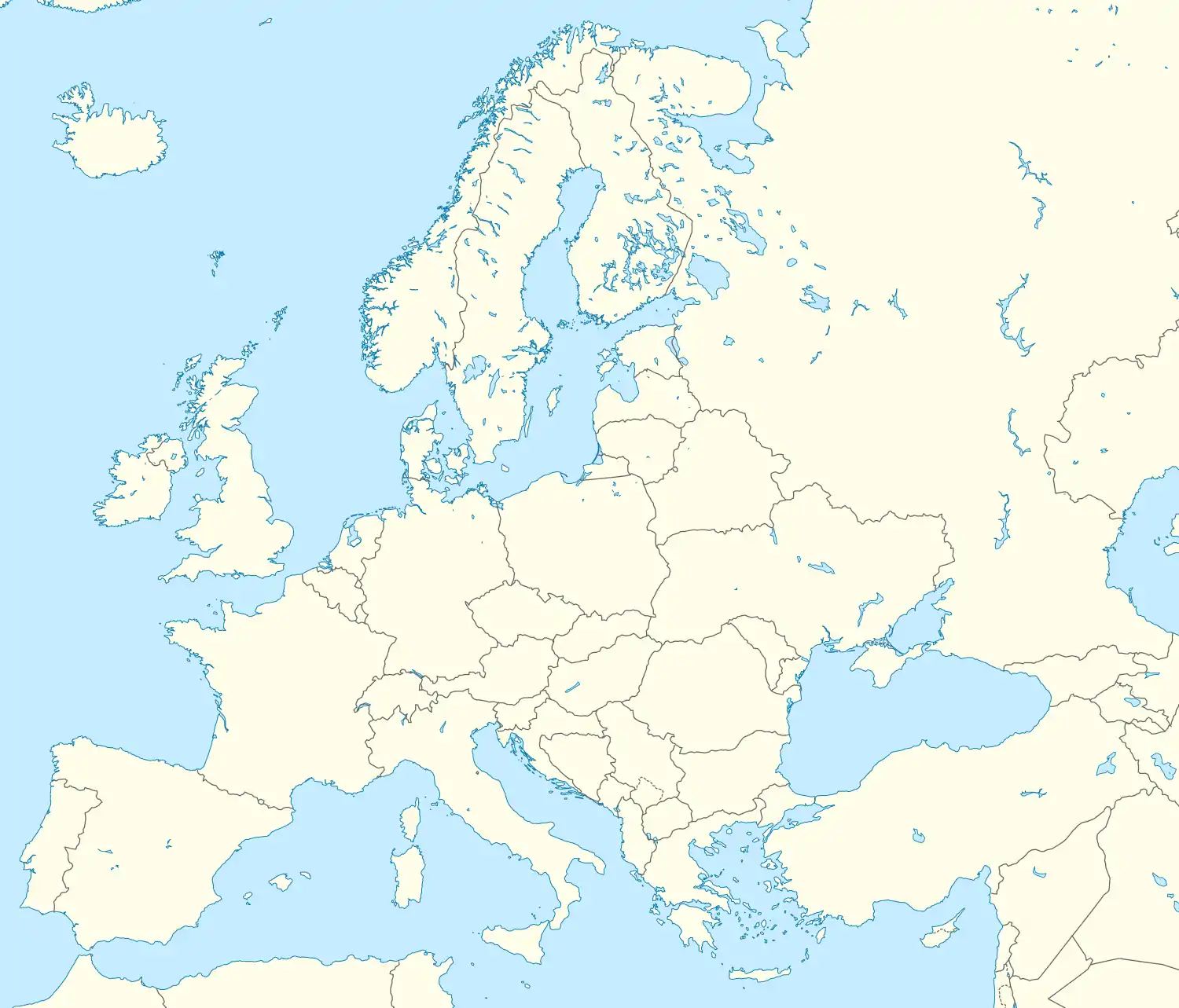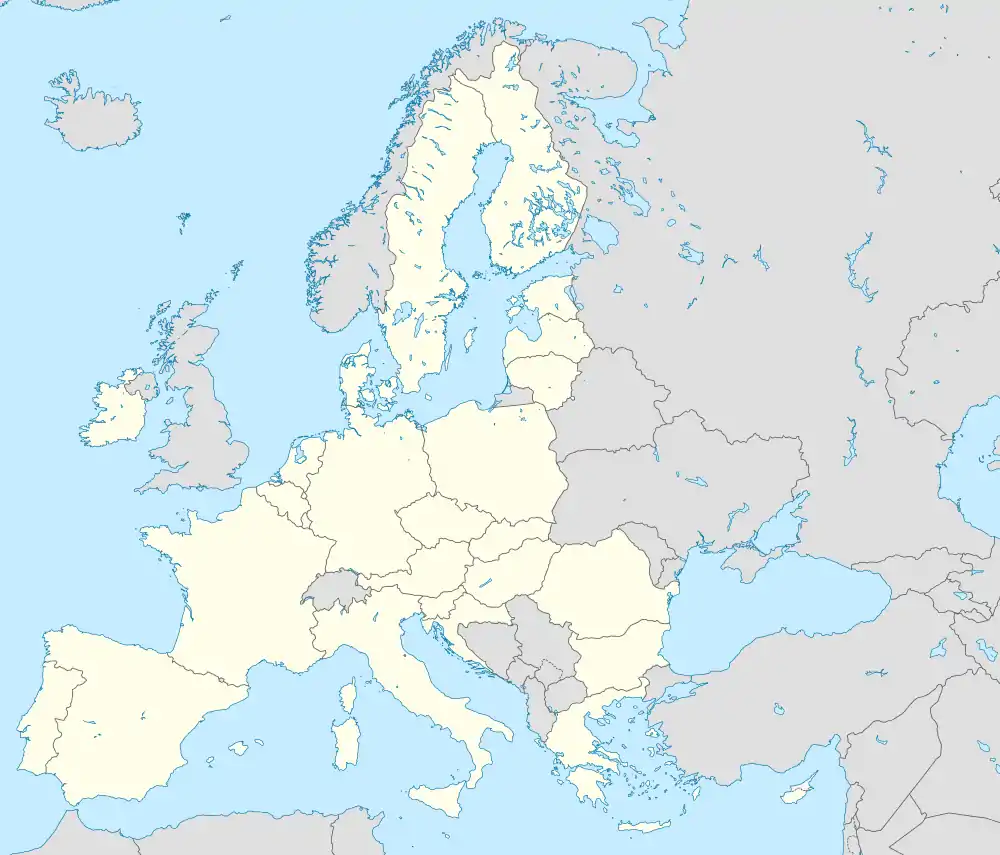List of cities in the European Union by Muslim population
Islam is the fastest-growing major religion in Europe, primarily due to immigration and higher fertility rates among Muslims.[1][2][3] Since the 1960s, immigrants from Muslim countries started to appear in numbers in Western Europe, especially in Germany, France and Belgium. Although large Muslim communities have existed on the continent since Ottoman conquests in the late Middle Ages, especially in the Balkans, this was the first major wave of immigration of Muslims to northwestern Europe.[4]
Muslims in Europe are not a homogeneous group. They are of various national, ethnic and racial identities. The top regions of origin of Muslims in Western Europe are Turkey, the Maghreb (including Morocco and Algeria), and South Asia (including Pakistan and Afghanistan).[5]
In Western Europe, Muslims generally live in major urban areas, often concentrated in poor neighborhoods of large cities.[6]
According to the Pew Research Center, as of 2016 the total number of Muslims in Europe is roughly 4.9%. The total number of Muslims in the European Union in 2010 was about 19 million (3.8%).[7] The French capital of Paris and its metropolitan area has the largest number (1.7 million in 2008 according to The Economist)[8] of Muslims out of any city in the European Union.
By 2030, people of Muslim faith or origin are predicted to form about 8% of the population of Europe.[7]
The table below lists large cities of the European Union with significant Muslim populations, some estimating the percentage of Muslims by using the percentage of Asians in those cities.
See also
References
- Nachmani, Amikam (2010). Europe and its Muslim minorities: aspects of conflict, attempts at accord. Brighton: Sussex Academic. p. 35. ISBN 9781845194000.
- Cherribi, Sam (2010). In the house of war: Dutch Islam observed. Oxford: Oxford University Press. p. 33. ISBN 9780199734115.
- "Europe's Growing Muslim Population". pewforum.org. November 2017. Archived from the original on 31 May 2019. Retrieved 26 April 2020.
- Barrett, Darcy M. (2008). Concepts of Identity and the Islamitization of Europe: The Components of Growth and Radicalization of the Global Salafi Islamic Movement in Europe and Its Implications for the West. p. 60. ISBN 9780549970705.
- Nydell, Margaret K. (23 March 2012). Understanding Arabs: a contemporary guide to Arab society. Boston, MA: Intercultural Press. p. 132. ISBN 9780983955801.
In 2011 they constituted 25 percent of Rotterdam andMarseilles; 20% of Malmo; 15 percent of Amsterdam, Brussels and Birmingham; 90% of Sarajevo; and 10 percent of London, Paris, Copenhagen, and Vienna.
Muslims in Western Europe originate from both Arab and non-Arab countries. Those in the United Kingdom are primarily from South Asia, in France from North and West Africa, in Germany from Turkey, in Belgium from Morocco, and in the Netherlands from Morocco and Turkey. - Farmer, Brian R. (2010). Radical Islam in the West: ideology and challenge. Jefferson, N.C.: McFarland & Co. p. 8. ISBN 9780786459537.
Muslims living in the West are also concentrated in urban area. Muslims are currently estimated to compose almost one-fifth of the population of Marseilles, and 15 percent of Paris, Brussels, and Birmingham. Muslims are currently make up approximately 10 percent of the populations in London and Copenhagen.
- Pew Forum, The Future of the Global Muslim Population, January 2011, "Archived copy". Archived from the original on 23 March 2012. Retrieved 18 September 2012.CS1 maint: archived copy as title (link), "Archived copy". Archived from the original on 9 February 2011. Retrieved 22 December 2011.CS1 maint: archived copy as title (link), "Archived copy". Archived from the original on 9 February 2011. Retrieved 31 January 2013.CS1 maint: archived copy as title (link)
- "When islam claims to be the victim". The Economist. 4 December 2008. Archived from the original on 23 October 2012. Retrieved 28 January 2013.
see the chart
- Phelan, James, 1979- author. (2014). 1. ISBN 9781742831961. OCLC 896985116.CS1 maint: multiple names: authors list (link)
- "Kerkelijkheid en kerkbezoek". Archived from the original on 21 June 2019. Retrieved 29 September 2017.
- "Moslims in Brussel 2010–2030". npdata.be. 13 February 2012. Archived from the original on 24 May 2019. Retrieved 3 November 2013.
- "12 de cada cien habitantes de Almeria es musulmana". npdata.be. 13 February 2012. Archived from the original on 13 April 2016. Retrieved 3 November 2013.
- "Estademograf.pdf" (PDF). hispanomuslim.es. Observatorio.pdf. 31 December 2016. Archived (PDF) from the original on 8 August 2019. Retrieved 29 September 2017.
- "Ramadan in Refugee homes and Schools in Berlin". tagesspiegel.de. Archived from the original on 12 December 2019. Retrieved 29 September 2017.
- Erasmus (15 October 2017). "In Belgium, arguments about Islam grow louder". The Economist. Archived from the original on 30 March 2019. Retrieved 9 November 2018.
- Der Spiegel: "Dialog mit Außerirdischen" Archived 3 March 2016 at the Wayback Machine. 25 March 2008, retrieved 20 April 2013.
- Die Welt: "Moschee für Mülheim" Archived 5 March 2016 at the Wayback Machine. 1 February 2012. Retrieved 20 April 2013
- Berliner Zeitung: "Kulturkampf in Köln" Archived 24 September 2015 at the Wayback Machine. 31 May 2007. Retrieved 20 April 2013
- "Archived copy". Archived from the original on 22 May 2018. Retrieved 7 April 2018.CS1 maint: archived copy as title (link)
- Micklethwait, John; Wooldridge, Adrian (2009). God is back how the global revival of faith is changing the world. New York: Penguin Press. ISBN 9781101032411.
Muslims are highly concentrated—they make up 24 percent of the population in Amsterdam; 20 percent in Malmo and Marseille; 15 percent in Paris, Brussels, Bradford, and Birmingham; and 10 percent or more in London and Copenhagen.
- "Archived copy". Archived from the original on 22 May 2018. Retrieved 7 April 2018.CS1 maint: archived copy as title (link)
- "Central Statistics Office - Population (Number) by Towns by Size, Sex, Religion and Census Year". Archived from the original on 29 October 2013. Retrieved 30 March 2016.
- "Muslime in Deutschland Landkreise". 5 April 2017. Archived from the original on 21 December 2019. Retrieved 29 September 2017.
- "Archived copy". Archived from the original on 22 May 2018. Retrieved 7 April 2018.CS1 maint: archived copy as title (link)
- "Religious composition of Bulgaria". Archived from the original on 22 May 2018. Retrieved 7 April 2018.
- "ΜΟΥΣΟΥΛΜΑΝΙΚΗ ΜΕΙΟΝΟΤΗΤΑ ΘΡΑΚΗΣ". www.hri.org. Archived from the original on 18 May 2019. Retrieved 24 March 2018.
- "Muslimska församlingar och föreningar i Malmö och Lund – en ögonblicksbild" (PDF). Lunds Universitet (in Swedish). 2016. Archived (PDF) from the original on 12 April 2020. Retrieved 20 May 2019.
- "Being Muslim in France" (PDF). Brookings Institution. p. 22. Archived from the original on 30 March 2019. Retrieved 16 February 2013.
- Erlanger, Steven (27 December 2009). "French Mosque's Symbolism Varies With Beholder". Archived from the original on 30 March 2019. Retrieved 25 February 2017.
- "Archived copy". Archived from the original on 22 May 2018. Retrieved 7 April 2018.CS1 maint: archived copy as title (link)
- Observatorio Andalusí (2020). "Estudio demográfico de la población musulmana Explotación estadística del censo de ciudadanos musulmanes en España referido a fecha 31/12/2019" (PDF). Unión de Comunidades Islámicas de España (UCIDE). Archived (PDF) from the original on 8 August 2019. Retrieved 18 April 2020.
- Instituto Nacional de Estadística, INE. "Demografía y población". Archived from the original on 16 April 2020. Retrieved 18 April 2020.
- "Archived copy". Archived from the original on 30 March 2019. Retrieved 16 January 2017.CS1 maint: archived copy as title (link)
- "Table - Members of congregations in religious and philosophical communities outside the Church of Norway, by religion/philosophy and county". www.ssb.no. Archived from the original on 9 November 2020. Retrieved 1 October 2020.
- "Archived copy". Archived from the original on 22 May 2018. Retrieved 7 April 2018.CS1 maint: archived copy as title (link)
- "Religious composition of Bulgaria". Archived from the original on 22 May 2018. Retrieved 7 April 2018.
- Statistiek, Centraal Bureau voor de. "Helft Nederlanders is kerkelijk of religieus". Centraal Bureau voor de Statistiek (in Dutch). Archived from the original on 14 July 2019. Retrieved 5 May 2019.
- "A French Town Bridges the Gap Between Muslims and Non-Muslims". New York Times. Archived from the original on 16 August 2019. Retrieved 16 August 2019.
- "Archived copy". Archived from the original on 22 May 2018. Retrieved 7 April 2018.CS1 maint: archived copy as title (link)
- "Archived copy". Archived from the original on 22 May 2018. Retrieved 7 April 2018.CS1 maint: archived copy as title (link)
- "Vienna: share of Catholics halved since 1970s". diepresse.com. August 2014. Archived from the original on 30 March 2019. Retrieved 29 September 2017.


